Sisters in Law
“If nature has built up barriers to keep women out of the legal profession, be assured she will stay out; but if nature has built no such barriers, in vain shall man build them, for they will certainly be overthrown.”
— Lavinia Goodell, March, 20, 1876
Who was the first female lawyer in the United States? That honor has been bestowed on many. The answer depends on whether the measuring stick is a law school diploma, admission to a bar, the actual practice of law, or all three. In the 19th century, some male lawyers attended law school. Others apprenticed at a law firm and then took a bar exam. The same was true for women.
Lavinia Goodell read law in 1873-1874. No Janesville law firm would accept her as an apprentice, so she studied on her own. Supportive male lawyers guided her reading and gave her contract work. In June 1874, she passed the Rock County Circuit Court bar exam, immediately opened her own office, and started drumming up work. She tried her first case two months later.
To put Lavinia’s experience in context, here are thumbnail sketches of her “sisters in law.” We need photos and more information for a few of these pioneering women lawyers. If you have some, please click “Contact Us” on the Home Page.
Arabella (Belle) Babb Mansfield (1869)
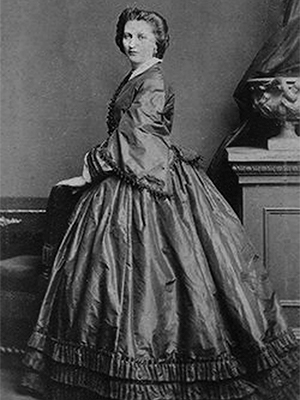
Belle Mansfield is often cited as the first woman lawyer in the United States. After graduating valedictorian from Iowa Wesleyan College in 1867, she began teaching and soon married John Mansfield, a professor there. Belle and John studied law and applied for admission to the bar together. At the time, Mount Pleasant was supportive of women’s rights. In June 1869 two lawyers, who were “Radical Republican legal activists interested in using law to improve the rights of women and African Americans,” examined Belle for the bar. Her performance was declared “the very best rebuke possible to the imputation that ladies cannot qualify themselves for the practice of law.” Reporting on Belle’s feat, the New York Independent asked: “Will not somebody out that way kindly do something unlawful to us . . . by which we can have the opportunity of hearing Mrs. Mansfield make a plea to the jury?” Alas, Belle never practiced law. She became a respected professor and a lecturer.
Myra Bradwell (1869)
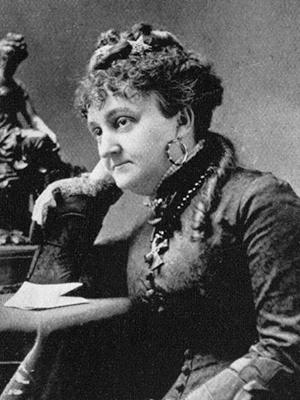
Myra Bradwell’s husband, James, was a lawyer and, for a time, a judge. She worked closely with him in his law office. In 1868, she launched the Chicago Legal News, which was devoted to publishing new laws and decisions promptly, before they were printed in books, and other matters useful to practicing lawyers. The paper was an instant success. The following year at age 38, “amid predictions that she would ‘wreck [her] family and break [her] hearthstone to smithereens,'” she passed the Illinois bar exam with high honors and applied to practice law.(3) She was denied due to her disability—she was married. She appealed to the Illinois Supreme Court and lost. She appealed to the United States Supreme Court and in 1873 lost again—8 to 1. The majority held that states have the right to regulate who gets a law license, which meant that women would have to obtain the right to practice law state-by-state. The concurrence by Justice Joseph Bradley reasoned that women could not have their own careers. In fact, the female sex was altogether unfit for many occupations, including law. The attorneys listening as Bradley read his concurrence laughed out loud. Myra worked with Ada Kepley (see below) to change Illinois’ law so that women could practice law there. In 1890, the Illinois Supreme Court finally granted Myra a license (retroactive to 1869), but she never practiced law.
Ada Miser Kepley (1870)
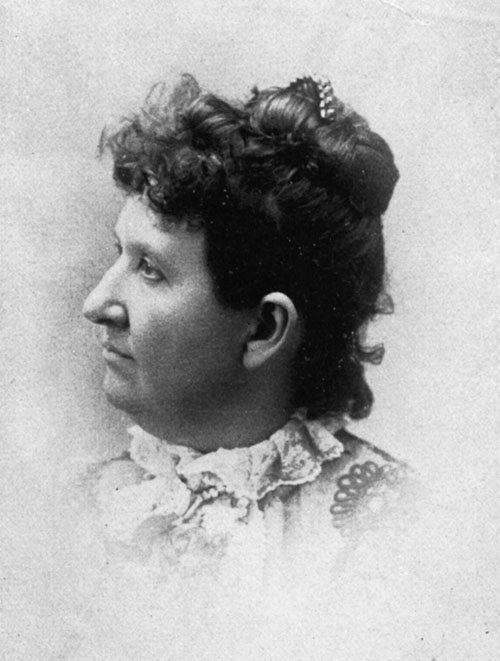
Ada Kepley graduated from the Union College of Law in Chicago (now Northwestern University) in 1870, and reportedly became the first woman in the United States to receive a law degree. Her husband, Henry B. Kepley, was a well-known attorney in Effingham, Illinois. She assisted at his law office for a few years but was not admitted to the Illinois bar until 1881. She devoted herself to temperance work. According to one source, she is best known for her “intense hatred of the bodily slavery of alcoholic drink” and “made a specialty of exposing the hidden roots of the liquor traffic in her town and county.”(6) She ran a monthly temperance paper called The Friend of Home where she expounded on the law, demanded its enforcement, and proposed new laws and ways to secure them. She also published a list of men known to frequent saloons. About her run for Illinois State Attorney General in 1881, she said: “There wasn’t a ghost of a show, but it was good agitation.”(5)
Lemma Barkaloo (1870)

Lemma Barkaloo (aka Helena Barkalow) was admitted to the Missouri bar on March 25, 1870. She lived in Brooklyn, New York, and applied to Columbia College Law School but was refused admission due to her gender. George Templeton Strong, one of the school’s trustees, wrote in his diary: “No woman shall degrade herself by practicing law . . . if I can save her.”(2) This setback did not deter her. She went to Washington University in St. Louis, reportedly the first law school in the nation to accept women. She passed the bar exam without graduating, began practicing at the office of Major Lucien Eaton, who is said to have given her a trial, making her the first woman to try a case in the United States. It is unclear whether a court or a jury decided it. When she died of typhoid fever a few months later the press described her as “gifted with a fine intellect” yet “modest,” “retiring” and “shunning all unnecessary publicity.” Her death was a “calamity” to those who sought to enlarge “the woman’s sphere.”(9)
Sarah Killgore (1871)
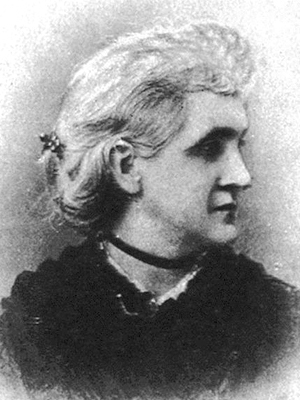
Sarah Killgore is cited as the first woman to both graduate from a law school and be admitted to the bar. At age 26, dissatisfied with her work as a teacher in Indiana, she began studying law at old Chicago University, then transferred to the University of Michigan, graduated in 1871 and was admitted to the bar a month before Phoebe Couzins. She returned to Indiana to recuperate from the “ill effect” of attending law school, and in 1875 married Attorney Jackson S. Wertman. She could not practice law there due to her gender, so she did office work for her husband. Later the Wertmans moved to Ohio, where Sarah passed the Ohio bar in 1893 and did real estate law. In an 1888 letter to The Equity Club (an organization of early women lawyers), Sarah wrote that women should practice law in order to lift the profession to “higher and nobler purposes.” “The wrecks of manhood strewn all along the shoals of this occupation tell plainly how much principle has been sacrificed for success.”(10)
Phoebe Couzins (1871)
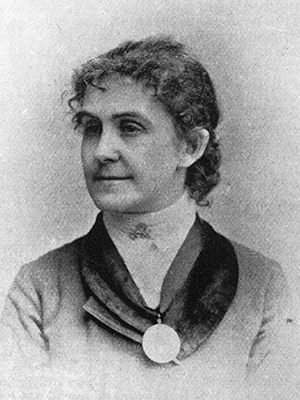
Along with Lemma Barkaloo, Phoebe Couzins attended Washington University Law School in St. Louis–reportedly the first law school in the United States to admit women. Phoebe graduated in 1871 and was admitted to the bar in Missouri, Kansas, Utah and in the U.S. District Court for Missouri, but she never practiced law. Rather, as an active member of the National Woman Suffrage Association, she became a lecturer and advocate for women’s suffrage. She is cited as the first woman appointed to a federal executive office—the U.S. Marshall for the Eastern District of Missouri. She was also appointed a commissioner for Missouri on both the National Board of Charities and Correction and the World’s Fair Board of Directors.
Charlotte Ray (1872)

Charlotte Ray was the first black woman lawyer in the United States. Her father, Charles Bennett Ray, was a prominent abolitionist and editor of The Colored American, a newspaper published by and for African-Americans. He enrolled her in one of the few schools that would accept black girls during the mid-19th century. She eventually attended Howard University for teacher training but also took law school classes and was admitted to the District of Columbia bar in 1872. In 1875, she helped Martha Gadley obtain a divorce from a drunk, abusive husband in the District of Columbia Supreme Court. Her legal career was short due to prejudice. As a black, female lawyer she could not secure enough clients to make a living. In 1880 she became a public school teacher in New York and worked to advance women’s suffrage and equality for black women.
Clara Holmes Hapgood Nash (1872)
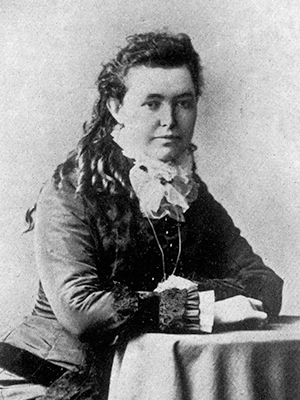
In October 1872, Clara Hapgood Nash was admitted to the Supreme Judicial Court of Maine. She formed a partnership with her husband, and they practiced in Washington County and Portland, Maine. In announcing her admission to the bar, the Chicago Legal News wrote: “We believe this is the first case in which a woman has gained full standing in the legal profession in New England, and therefore give full prominence to the fact. We know nothing of the circumstances of the case, but presume that the door is now thrown fully open in the court of Maine, in which one lady, at least has been for some time recognized as one of the official court stenographers.”(12)
Judith Ellen Foster (1872)
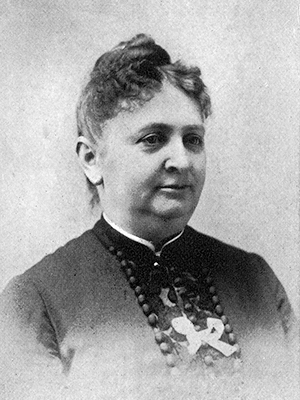
Judith Foster studied law and was admitted to the Iowa Supreme Court in 1872. She initially practiced alone but then formed a partnership, Foster & Foster, with her husband. However, she is mostly known for involvement with the Women’s Christian Temperance Union and as a lecturer on temperance and women’s suffrage. Her temperance work made her enemies, who reportedly burned down her home. She is regarded as the first woman to practice law in Iowa. Belle Mansfield never did. (See above). In an 1878 speech to a group of women’s rights activists, Judith said she “claimed no heroism” in her pursuit of a legal career. She explained: “I read Blackstone for hours when my little children were playing about me. I was as ready to pause and attend to their little calls as though I had been engaged with my needle, and quite as well as if I had been reading a gay romance.”(13)
Alta Hulett (1873)
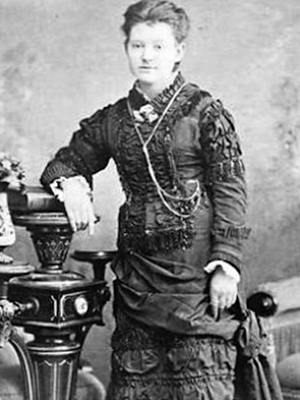
Alta Hulett graduated from high school on her 16th birthday and immediately set upon fulfilling her lifelong dream of becoming a lawyer. She studied at the office of William Lathrop of Rockford. After a few months, she passed the bar exam and sent her credentials to the Illinois Supreme Court, which had recently denied Myra Bradwell’s application based on her status as a married woman. Alta was not married so she expected a favorable result, but the supreme court sat on her petition.
Tired of waiting, she and Myra drafted a bill to prohibit the use of gender to bar women from any profession. The Illinois legislature passed an amended version of it, which gave women the right to work in most fields, including law. Alta then reapplied and was admitted to the Illinois bar in 1873 at age 19. One of the justices scolded: “If you were my daughter, I would disinherit you.”(3) By one account, Alta possessed an “indomitable will,” “immense reserved power,” “a fine physique,” “broad sympathies,” and a “genial disposition.”(8) Alta did practice law but only briefly. She died in 1877 at age 23.
Belva Lockwood (1873)
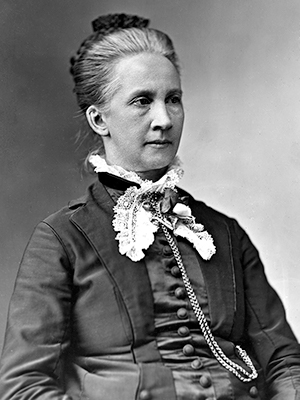
Belva Lockwood was born to poor farmers, at 18 married a poor farmer, and then had a baby. Nothing foreshadowed her extraordinary future. Her young husband soon died, and she seized the chance to return to school where she began to learn about the law. After graduation, she taught. But at 36, she and her daughter moved to Washington D.C. where she became fascinated with politics, law, and women’s suffrage. She married 65-year old Ezekiel Lockwood, a lay minister and dentist, who supported her ambitions. One was to become a lawyer.
At age 39 Belva had a new baby, but it didn’t cure her “mania for the law.”(2) She and Ezekiel attended a law lecture at Columbian College in D.C. Afterwards the president told her not to return because her presence would “distract the attention of the young men.”(14) She persisted. In 1871, Belva and 14 other women were excited to enroll at the National University Law School, but then they were placed in a segregated program. Belva was one of two women to complete the course. When the school refused them diplomas, Belva was furious. This denied automatic admission to the D.C. bar. In 1872, she sought admission by taking an oral bar exam, which lasted three days. The examiners refused to decide her application. In 1873, the N.U.L.S. finally granted her a diploma, and she immediately set up a solo practice.
To make a long, impressive story short, the “irrepressible” Belva Lockwood wound up persuading Congress to pass “An Act to Relieve the Legal Disability of Women,” which ultimately allowed her to gain admission to practice in the United States Supreme Court in 1879. Less than two years later, she became the first woman lawyer to argue a case there. She did it again at age 75. In between, she twice ran for President of the United States as the Equal Rights Party candidate. As she explained: “It is quite time that we had our own party; our own platform, and our own nominees. We shall never have equal rights until we take them, nor respect until we command it.”(14)
Clara Shortridge Foltz (1878)
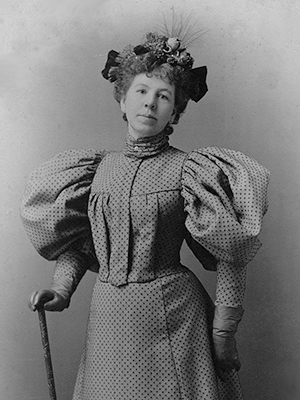
Clara Foltz eloped with a Union Army soldier at age 15, became a farmer’s wife in Iowa, and started having children. They moved to Oregon and then California where after having her 5th baby, her husband left her. She had been interested in women’s rights and the law for some time and decided to try to support her family as an attorney. But first she had to draft, persuade the California Legislature to pass, and convince the governor to sign, the “Woman Lawyer’s Bill.” She succeeded on all fronts. On September 4, 1878, Clara passed the bar exam and became “the Portia of the Pacific”—the first woman lawyer on the Pacific Coast. Though she was already a lawyer, she also wanted to be California’s first female law graduate, so she and Laura Gordon registered at U.C. Hastings College of Law. After the third day of class they were barred from attending. Their rustling skirts bothered the male scholars. They sued for admission and won. Clara practiced law but had to supplement her income through lecture tours on a variety of topics, including women’s rights. She is credited with conceiving of a public defender system to balance the tendency of police and prosecutors to convict whomever was arrested.
Sources consulted: (1) “Time Machine: ‘Petticoats at the Bar’ as nation’s first female lawyer was an Iowan,” The Gazette, April 16, 2018; (2) Jill Norgren, Rebels at the Bar: The Fascinating, Forgotten Stories of America’s First Women Lawyers, (New York, N.Y.: NYU Press, 2013); (3) Jane M. Friedman, America’s First Woman Lawyer: The Biography of Myra Bradwell, (Buffalo, N.Y.: Prometheus Books: 1993); (4) “Myra Bradwell: First Woman Admitted to Illinois Bar,” Illinois History and Lincoln Collections; (5) “13 Pioneering Women in the Law,” abajournal.com; (6) Frances E. Willard and Mary A. Livermore, eds., A Woman of the Century, (Buffalo, N.Y.: Charles Wells Moulton, 1893); (7) “A Woman Admitted to the Bar in Missouri,” Chicago Legal News, 212, April 3, 1870; (8) Phebe Hanaford, Daughters of America or Women of the Century, (True and Company, 1882); (9) “Death of Woman Lawyer,” The Woman’s Journal, 308, Oct. 1, 1870; (10) Margaret A. Leary, “Sarah Killgore Wertman: Michigan’s First Woman Lawyer“, 8-11 (LQN, Winter/Spring 2006); (11) “Charlotte E. Ray’s Brief but Historic Career as the First U.S. Black Woman Attorney,” history.com; (12) Chicago Legal News, 54, Oct. 26, 1872; (13) “Mrs. Foster’s Speech,” The Woman’s Journal, 387, Nov. 30, 1878; (14) Jill Norgren, Belva Lockwood: The Woman Who Would Be President (New York, N.Y.: NYU Press 2007); (15) Barbara Babcock, Woman Lawyer: The Trials of Clara Foltz (Stanford, CA: Stanford University Press 2011).
Photo credits: Belva Lockwood (Library of Congress); Arabella Babb Mansfield (Iowa Wesleyan Newsom Archives); Clara Foltz (UC Berkeley Bancroft Library Portrait Collection); Ada Miser Kepley, Judith Ellen Foster, Phoebe Couzins, Myra Bradwell, Sarah Killgore, Clara Holmes Hopgood Nash, and Alta Hulett (A Woman of the Century).